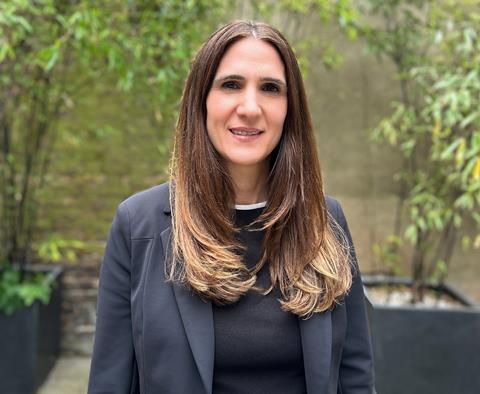Sabrina Klor steps into her role as chair of Women in Architecture UK with a mission to rebuild the profession on more inclusive foundations

We are at a critical juncture in the architectural profession, one where the rhetoric of inclusion must give way to action, accountability and structural reform.
I am honoured to step into the role of chair of Women in Architecture UK (WIA) at this key moment, alongside Anna Ifanti as vice chair and our incredibly talented strategic board members, Karen Fugle, Eleni Stathi, Annie Consentino, Nina Farrell, Rachael Davidson and Maria Loreto Flores, as we launch a new vision for the future of our profession. Our 2025 to 2028 strategy is not merely a refresh; it is a recalibration of purpose.
We are no longer content with conversations that tinker at the edges. We are here to reshape the centre.
WIA has long been a force for connection, support and inspiration. Through our mentoring programmes, inclusive events and industry advocacy, we have built a vibrant community of people who care deeply about the future of the built environment.
But we also know that support alone does not dismantle barriers or reduce the numbers leaving the profession disillusioned. To create real change, we must shift from supportive networks to systems-level change.
From gender equity to intersectional reform
Our new strategy begins by acknowledging a fundamental truth: equity cannot be achieved through a single lens. While gender remains a powerful organising force of exclusion, it does not act alone.
Race, class, disability, sexuality and caregiving responsibilities intersect to shape lived experiences across the profession. This complexity is not a challenge to be simplified, it is a reality to be recognised, respected and addressed through policy, programmes and leadership.
Intersectionality is not a buzzword for us. It is the foundation of how we understand inequity and, critically, how we build the path forward. Our vision is for an architectural profession that reflects the diversity of the society it serves, not only in numbers but in power, influence and authorship.
The problem is known, our strategy proposes the solution
Progress has stalled. Just 31% of registered architects in the UK are women. The gender pay gap is over 16%, more than double the national average. Too many women, especially those with caring responsibilities, leave the profession at the very moment their careers should accelerate. These statistics are not new. What is new is our response.
The WIA 2025 to 2028 strategy introduces a focused and measurable roadmap for change, built around four key pillars:
- Expanded events and programmes: From relaunching our Parents Club to scaling our popular monthly Thursday meetups and building new partnerships across the sector, we’re expanding spaces and creating a community where underrepresented voices are heard, celebrated, supported and elevated.
- Strengthened mentoring: Our flagship mentoring scheme will relaunch with a more structured, inclusive model, making space for all women, men and non-binary people, particularly those historically excluded from the architecture conversation.
- Policy and advocacy campaigns: We will continue pushing for reform in flexible working, equal parental leave, inclusive hiring practices and leadership development, backed by CPD sessions and policy dialogue with educators, employers and industry bodies.
- Research-backed thought leadership: In partnership with like-minded organisations, we will generate data and storytelling that redefine what leadership looks like, centring the experiences of people too often overlooked.
This isn’t just about events or mentoring. It’s about cultural transformation. We’re not asking to be included in a system that excludes us, we’re designing a new one where everyone is included.
Leading with purpose
In my own professional life, leading global operations across 15 studios at Broadway Malyan, I have seen both the promise and the deep-rooted inequities in our industry. I have seen how much harder the family’s main caregivers must work to be taken seriously. I’ve also seen what’s possible when leadership takes a systemic, human-centred approach to change.
That’s the energy I bring to WIA. With Anna, the wider board and our extraordinary community of volunteers, we are united by a shared mission: to reimagine architecture not only as a profession but as a place where everyone can belong, lead and thrive.
This next chapter is not about naming the problem, we know it too well. It’s about designing the solution. And we are calling on the industry, allies, educators, policymakers and practice leaders to take shared responsibility in building it with us.
A movement for the future
WIA is more than a network. We are a movement. And movements are built on momentum, commitment and collective action. This strategy is not the endpoint, it is the beginning of a new phase, one in which the default systems of our profession are reimagined to serve all of us, not just a privileged few.
This work belongs to all of us. Join us.
To learn more, become a mentor, partner with us or support our mission, visit wia-uk.org.
Postscript
Sabrina Klor is COO of Broadway Malyan and Chair of Women in Architecture UK.
















No comments yet